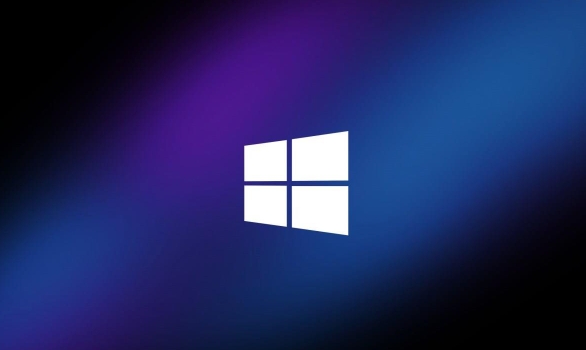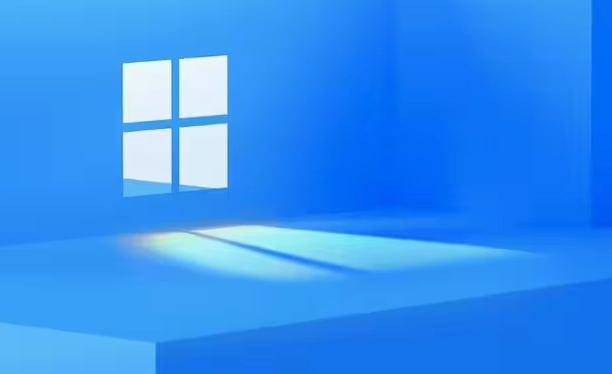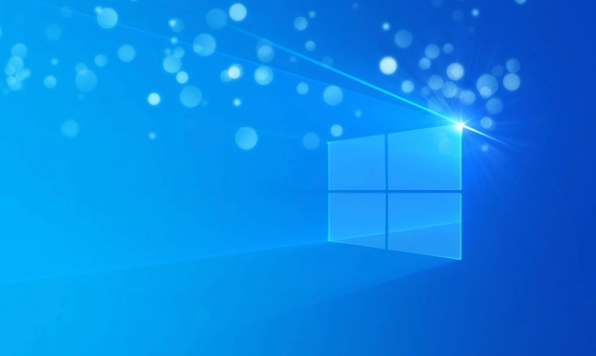Installing Windows 10 on a tablet requires ensuring hardware compatibility and a bootable USB drive is ready. 1. Use at least 8GB USB drive and Media Creation Tool to create the installation disk, pay attention to selecting a 64-bit architecture and UEFI boot; 2. Confirm that the tablet supports desktop system, check the processor type (non-ARM), motherboard chipset compatibility, and find successful installation cases; 3. Pay attention to the disk format and partitioning method during installation. If you use the GPT partition table, you must start with UEFI mode, and manually establish EFI, MSR and other partitions if necessary; 4. After installation, download and install key drivers (graphics card, touchpad, battery management), adjust power settings and optimize battery life, and fix problems such as touch screen, sound, and camera. Full preliminary preparations can improve the installation success rate.

Installing Windows 10 on a tablet is actually similar to installing it on an ordinary computer, but due to the difference in the hardware structure of the tablet and the pre-installed system, it will be a bit special to operate. If your tablet supports desktop installation and you do need to use the full version of Windows, you can follow the following methods.

Prepare a bootable USB drive
First of all, you need a USB drive with at least 8GB capacity to make a Windows 10 installation disk. The key to this step is to ensure that the USB drive is formatted correctly and the boot method is appropriate.

- Using Microsoft's official Media Creation Tool is the safest way, it can automatically download the corresponding version of the system image and write to the USB flash drive.
- Pay attention to choosing the correct architecture (32-bit or 64-bit). Generally, current devices use 64-bit.
- If your tablet uses a USB-C port, you may also need an adapter or a USB drive with a USB-C port to plug in.
In addition, after making, remember to set the boot from the USB flash drive in the BIOS. Some tablets enter the BIOS by pressing the volume key and adding the power key. This depends on the specific model description.
Check if the tablet is compatible with Windows 10
Not all tablets can install Windows 10 smoothly. Especially those devices that are originally running Android or pre-installed with a thin version of Windows, they may encounter the problem that the driver is not supported.

- First, confirm the processor type: If it is an ARM-architectural chip (such as Qualcomm Snapdragon), then you cannot directly install the standard version of Windows 10, and you can only consider a specially adapted version.
- Check whether the motherboard chipset is supported by Windows. Common Intel or AMD platforms are not a big problem.
- Before installation, it is best to go to the forum or the manufacturer's official website to check if there are any cases of successful installation by others to avoid getting stuck.
Even if some devices can be installed on the system, they may not have touch screen drivers or WiFi modules cannot be recognized. These require the drivers to be prepared in advance or community patches are found.
Pay attention to partitioning and format during installation
After reaching the official installation interface, you will find that many tablets do not have traditional hard disk partitions, but are packaged in one piece with eMMC or SSD. At this time, pay special attention to the disk format and partitioning method.
- If the original system is a GPT partition table, you must also start it in UEFI mode, otherwise the installation will fail.
- In order to save costs, some tablets use 32-bit UEFI firmware, and even if the 64-bit system is installed, it cannot start normally.
- During installation, you can select "Custom Installation", manually delete the old partition and re-create EFI, MSR, system partition, etc.
It is recommended to check "Quick Format" to speed up the process, but if there is important data before, it is recommended to back up and format it thoroughly.
Basic functions for adjusting after installation
Installing the system is only the first step, and the driver and performance optimization problems will be solved next.
- Go to the official website or forum to download the corresponding drivers, especially the key parts of graphics cards, trackpads, and battery management.
- After installing the driver, you can run a system physical examination tool (such as uninstalling the old graphics card driver and reinstalling it).
- Adjust the power management settings to make the tablet more reasonable in battery life under Windows.
- If the touch screen does not respond, it may be because the touch controller driver is missing, and you can also try to update the kernel or patch it.
Sometimes there will be problems such as abnormal sound and unworked cameras. These minor problems can usually be solved by updating the driver.
Basically these are the steps. The whole process is not too difficult, but pay attention to hardware compatibility and driver support. As long as the preliminary preparations are done, most mainstream brands of tablets can still run Windows 10 smoothly.
The above is the detailed content of How to install Windows 10 on a tablet. For more information, please follow other related articles on the PHP Chinese website!

Hot AI Tools

Undress AI Tool
Undress images for free

Undresser.AI Undress
AI-powered app for creating realistic nude photos

AI Clothes Remover
Online AI tool for removing clothes from photos.

Clothoff.io
AI clothes remover

Video Face Swap
Swap faces in any video effortlessly with our completely free AI face swap tool!

Hot Article

Hot Tools

Notepad++7.3.1
Easy-to-use and free code editor

SublimeText3 Chinese version
Chinese version, very easy to use

Zend Studio 13.0.1
Powerful PHP integrated development environment

Dreamweaver CS6
Visual web development tools

SublimeText3 Mac version
God-level code editing software (SublimeText3)
 How to install Android apps on Linux?
Mar 19, 2024 am 11:15 AM
How to install Android apps on Linux?
Mar 19, 2024 am 11:15 AM
Installing Android applications on Linux has always been a concern for many users. Especially for Linux users who like to use Android applications, it is very important to master how to install Android applications on Linux systems. Although running Android applications directly on Linux is not as simple as on the Android platform, by using emulators or third-party tools, we can still happily enjoy Android applications on Linux. The following will introduce how to install Android applications on Linux systems.
 How to install Podman on Ubuntu 24.04
Mar 22, 2024 am 11:26 AM
How to install Podman on Ubuntu 24.04
Mar 22, 2024 am 11:26 AM
If you have used Docker, you must understand daemons, containers, and their functions. A daemon is a service that runs in the background when a container is already in use in any system. Podman is a free management tool for managing and creating containers without relying on any daemon such as Docker. Therefore, it has advantages in managing containers without the need for long-term backend services. Additionally, Podman does not require root-level permissions to be used. This guide discusses in detail how to install Podman on Ubuntu24. To update the system, we first need to update the system and open the Terminal shell of Ubuntu24. During both installation and upgrade processes, we need to use the command line. a simple
 How to Install and Run the Ubuntu Notes App on Ubuntu 24.04
Mar 22, 2024 pm 04:40 PM
How to Install and Run the Ubuntu Notes App on Ubuntu 24.04
Mar 22, 2024 pm 04:40 PM
While studying in high school, some students take very clear and accurate notes, taking more notes than others in the same class. For some, note-taking is a hobby, while for others, it is a necessity when they easily forget small information about anything important. Microsoft's NTFS application is particularly useful for students who wish to save important notes beyond regular lectures. In this article, we will describe the installation of Ubuntu applications on Ubuntu24. Updating the Ubuntu System Before installing the Ubuntu installer, on Ubuntu24 we need to ensure that the newly configured system has been updated. We can use the most famous "a" in Ubuntu system
 Detailed steps to install Go language on Win7 computer
Mar 27, 2024 pm 02:00 PM
Detailed steps to install Go language on Win7 computer
Mar 27, 2024 pm 02:00 PM
Detailed steps to install Go language on Win7 computer Go (also known as Golang) is an open source programming language developed by Google. It is simple, efficient and has excellent concurrency performance. It is suitable for the development of cloud services, network applications and back-end systems. . Installing the Go language on a Win7 computer allows you to quickly get started with the language and start writing Go programs. The following will introduce in detail the steps to install the Go language on a Win7 computer, and attach specific code examples. Step 1: Download the Go language installation package and visit the Go official website
 How to install Go language under Win7 system?
Mar 27, 2024 pm 01:42 PM
How to install Go language under Win7 system?
Mar 27, 2024 pm 01:42 PM
Installing Go language under Win7 system is a relatively simple operation. Just follow the following steps to successfully install it. The following will introduce in detail how to install Go language under Win7 system. Step 1: Download the Go language installation package. First, open the Go language official website (https://golang.org/) and enter the download page. On the download page, select the installation package version compatible with Win7 system to download. Click the Download button and wait for the installation package to download. Step 2: Install Go language
 How to download 360 Secure Browser on your computer
Apr 12, 2024 pm 01:52 PM
How to download 360 Secure Browser on your computer
Apr 12, 2024 pm 01:52 PM
How to download 360 Secure Browser on your computer? It is a very secure web browser software. This browser is very rich in functions and very simple to operate. Using 360 Secure Browser to browse the web can protect user privacy and security very well. Many people like to use this browser. Browser office, but many people still don’t know how to download and install 360 Secure Browser on their computers. This article will give you a detailed introduction to the installation process of the 360 ??Safe Browser PC version, hoping to help you solve the problem. Overview of the installation process under the computer version of 360 Secure Browser 1. On the computer’s main page, find “360 Software Manager” and enter (as shown in the picture). 2. Open 360 Software Manager and find the search box (as shown in the picture). 3. Click Search
 PHP FFmpeg extension installation guide: easy-to-follow tutorial
Mar 28, 2024 pm 02:17 PM
PHP FFmpeg extension installation guide: easy-to-follow tutorial
Mar 28, 2024 pm 02:17 PM
PHPFFmpeg Extension Installation Guide: Simple and easy-to-understand tutorial In the process of website development, sometimes we need to process various multimedia files, such as audio, video, etc. FFmpeg is a powerful multimedia processing tool that can process audio, video and other formats, and supports various transcoding, cutting and other operations. The PHPFFmpeg extension is an extension library that calls FFmpeg functions in PHP. It can be used to process multimedia files easily. Below we will introduce PHPF in detail
 How to open Python after downloading
Apr 03, 2024 pm 05:12 PM
How to open Python after downloading
Apr 03, 2024 pm 05:12 PM
To open the Python you just downloaded, follow these steps: Place the installer in an easily accessible location. Double-click the installer icon and follow the on-screen instructions. Once the installation is complete, enter "python" in a command prompt or terminal window to start a Python interactive shell.






